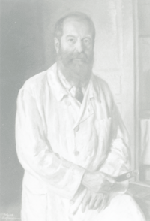Links
Wir danken allen Institutionen für ihre Links zu uns. Sehr zu unserer Freude sind vor allem im Jubiläumsjahr 2005 die Links und Erwähnungen so angestiegen, dass es uns nicht mehr möglich ist alle Seiten zu erwähnen.
|
||
| Österreich | ||
| www.aeiou.at | Website des Bundesministeriums für Wissenschaft, Unterreich und Kultur | |
| Deutschland | ||
| Heise.de | ||
| Geschichte der Transplantation - Universität Berlin | ||
| Das Katholische Blindenwerk Norddeutschland e.V. | Erwähnung | |
|
||
| Magazin Forschung 1-1997 | Artikel |
|
| Frankreich | ||
| Syndicat National des Ophtalmologistes de France | Absatz
mit Bild En 1906, Eduard Konrad Zirm (1887-1944) réussit le premier une kératoplastie transfixiante chez l'homme. |
|
| Großbritanien | ||
| National Anti-Vivisection Society | Ausführliche Beschreibung - am Ende der Seite - Dr. Zirm verwendete keine Tierversuche in seinen Forschungen | |
| Südamerika | ||
| Latin Salud | ||
| Argentinien | ||
| Transplante de Cornéas | ||
| USA |
|
|
| Eye Bank Association of America | Throughout 2005, the Eye Bank Association of America (EBAA) will be commemorating the centennial of the first corneal transplant performed by Eduard Zirm, MD, in what is now the Czech Republic. read more | |
| Lions Eye Bank | (...)This milestone ended more than a hundred years of unsuccessful attempts by eye surgeons all around the world. The method developed by Dr. Zirm is still the basis for the repair of corneal damage. Derived from this historical method are the methods of transplants of hearts, kidneys, and livers. | |
| Gift of hope.org | But in 1905, Dr. Eduard Konrad Zirm, an ophthalmologist practicing
in Austria, was presented with a unique opportunity. One of his patients
was a young boy whose damaged eye, although it could not be saved,
had a perfectly intact cornea. Another of his patients was a workman
whose corneas were damaged in an accident.
Dr. Zirm removed the boy’s eye and carefully excised the
cornea, then implanted it in place of the workman’s |
|
| unos.org | March is National Eye Donor Month. Throughout 2005, the Eye Bank Association of America (EBAA) will be commemorating the centennial of the first corneal transplant performed by Eduard Zirm, MD, in what is now the Czech Republic. Eduard Zirm, born in 1863 in Vienna, Austria, attended the University of Vienna where he studied medicine. Dr. Zirm worked in ophthalmology at Vienna Univ-Augenklinik and was eventually offered a position at a newly formed eye clinic in a rural area of Austria (now the Czech Republic). While there, he founded what would become the largest eye clinic in the area. During his years in practice, Zirm conducted thousands of cataract surgeries along with a number of cornea transplants. | |
| Missouri | This momentous medical milestone was performed by Dr. Eduard Zirm in 1905, in what is now known as the Czech Republic. The first cornea transplant recipient, Alois Glogar, had experienced burns in both of his eyes leaving him blind. Dr. Zirm used human corneal tissue to provide Glogar with renewed vision. Complications resulted in one of Glogar's eyes, but the other resulted in the first cornea transplant. | |
| Houston | ||
| Florida | ||
| Schweden | Absatz
auf schwedisch Den första lyckade hornhinnetransplantationen på en människa utfördes av ögonläkaren Eduard Konrad Zirm i Österrike så tidigt som år 1905. |
|

Bescheid, dann geben wir gerne Bild und Textmaterial frei.
Wir linken auch
gerne auf Ihre Seiten.